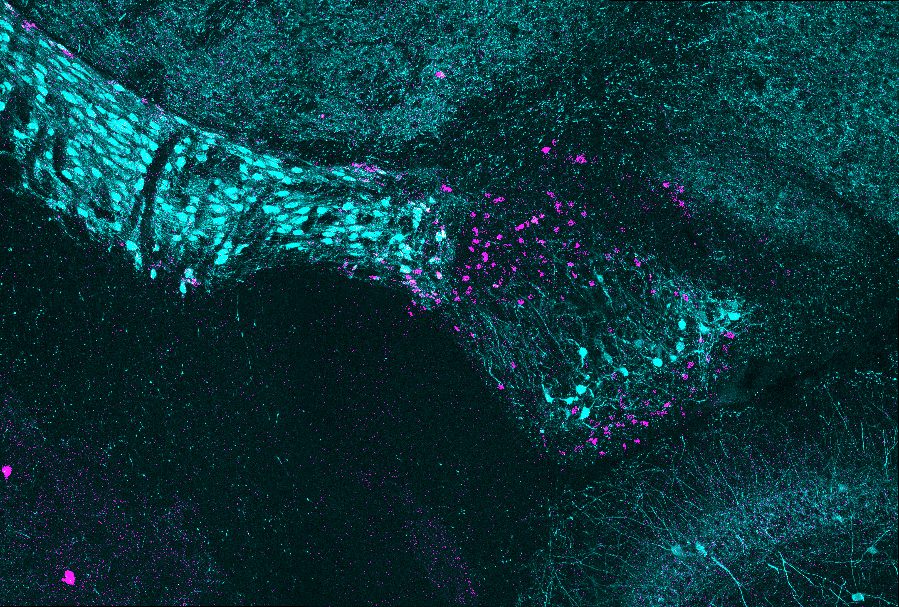Scientists discover cellular structure of poorly understood visual brain region

Graduate student Ubadah Sabbagh placed a cold glass slide on the microscope. It was getting late, and the lab was quiet. He adjusted a few settings and traced along the optic tract before zooming in on the brain’s thalamus. What he saw surprised him: two adjacent stripes of glowing spots, each dot denoting a cell body.
At that point, two decades had passed since scientists reported that a small area in the brain’s visual thalamus had unique characteristics that set it apart from nearby regions. Previous studies led by other researchers showed that the region, called the ventral lateral geniculate nucleus (vLGN), connects to neural circuits involved in regulating circadian rhythm and mood.
But little was known about the region’s cellular architecture – until now.
In a new study published online this week in the Journal of Neurochemistry, Virginia Tech scientists identified more than 40 genes expressed in the vLGN and discovered more than half a dozen brand new neuron subtypes, each expressing unique molecules and clustered in tightly packed striped layers.
To learn more, check out the whole article below.